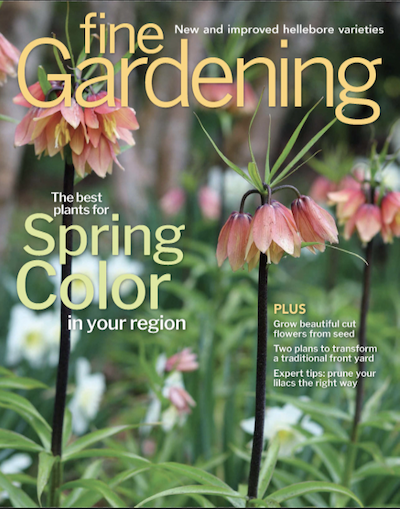Mark Dwyer
-
Midwest Regional Reports
Plants with Early Spring Flower Fragrance for the Midwest
In the Midwest, any bit of early spring color is welcome as we transition from the long winter months. Throw some early spring-flower fragrance into the mix, and that is…
-
How-To
Essential Tools for Pruning
These small pruners go easy on your hands There are many great bypass pruners on the market, but I had carpal tunnel surgery years ago, and my hands tire easily…
-
Midwest Regional Reports
Conifers That Change Color in Winter for Added Interest
The garden is always transitioning. As gardeners, we are highly tuned into the visual changes that occur in the landscape every day, week, month, and throughout the seasons. We understandably…
-
Midwest Regional Reports
Winter Containers for the Midwest
While winter in the Midwest brings an end to active growth in the garden, there’s no reason why containers out in our gardens can’t continue to contribute color and texture.…
-
Design
Columnar Conifers for Focal Points, Screening, and Tight Spaces
In elementary school I was told that it was poor form to use more than one exclamation point at the end of a sentence. However, when I design gardens, I’m…
-
How-To
How to Stake and Train a Conifer
While many conifers are able to grow without any staking or training at all, newly planted trees may require it in order to establish well. Additionally, staking and training can…
-
Midwest Regional Reports
The Weird and Wonderful Osage Orange
In October and November, apple-green, grapefruit-size fruits of female Osage orange trees (Maclura pomifera, Zones 4–9) fall from their canopies and hit the ground with a hearty thump. This North…
-
Midwest Regional Reports
Winter Protection for the Midwest Garden
As the gardening season comes to a close in the Midwest, there are some important tasks we should consider to protect our gardens from the harsh conditions of winter. Protection…
-
Midwest Regional Reports
5 Unusual Bulbs for the Midwest
While cool nights and diminishing daylight in fall triggers putting our gardens to bed at the forefront of our minds, don’t forget that this is the time to consider enlivening…
-
Midwest Regional Reports
10 Tips for Transitioning to Autumn Garden Containers
Right around the time that days shorten and the nights get cooler, it becomes clear that our containers may be getting a little tired after working so hard during the…
















